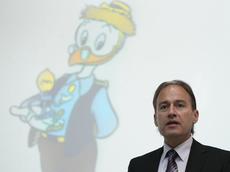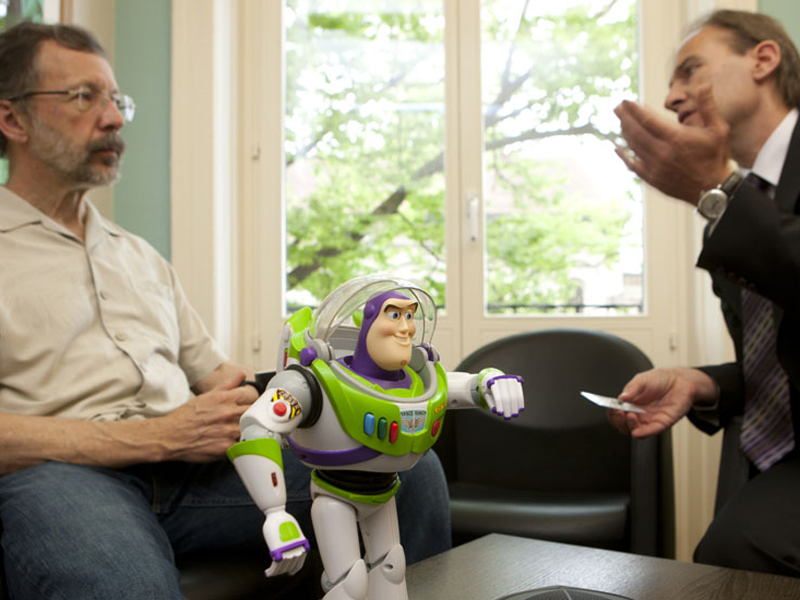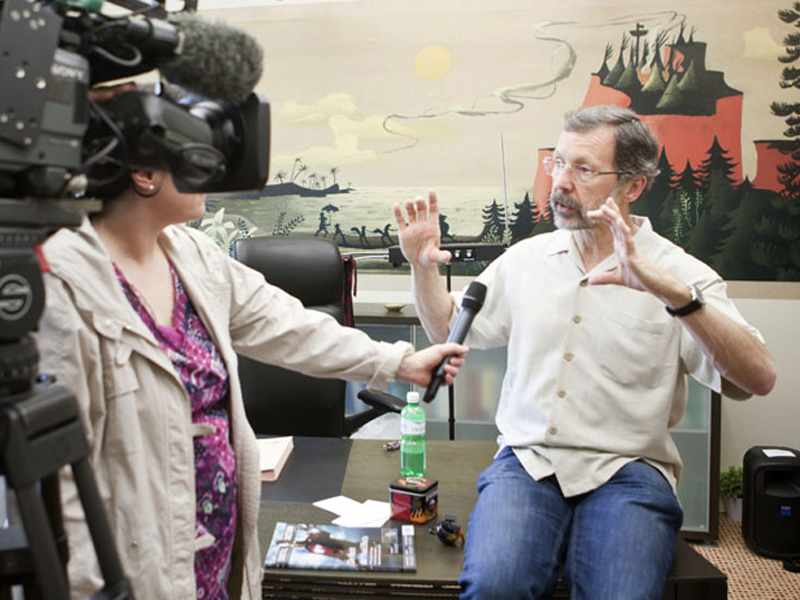Goofy about Gearloose’s new animation lab
Last Friday "Disney Research Zurich" - the only Walt Disney research lab at a European university - was officially opened. The director of the new lab at ETH Zurich, Markus Gross, revealed what innovations the researchers are working on, affording a glimpse into the future of animated film.

“Mickey Mouse at ETH Zurich”, read the headlines in the fall of 2008 as news of the research collaboration between the university and Walt Disney did the rounds. Markus Gross, ETH-Zurich professor and President of Disney Research Zurich (DRZ), has spent the last year and a half putting together his new research team and getting the lab in Clausiusstrasse near the main ETH Zurich building up and running. They initially kept many of the projects at DRZ under wraps until the inventions had been patented. Last Friday, however, DRZ opened officially and Markus Gross finally revealed his team’s research focuses to the media as the researchers explained their work to journalists in the DRZ offices.
Quest for animation’s Holy Grail
DRZ won’t only be developing new technology for Walt Disney’s film animation studios, but also for all areas of the concern with its 130,000 employees; including television, games, theme parks and merchandising. Video technology comes into play in all of these sectors in some form or other. One of DRZ’s projects is centered on modeling human faces – according to Markus Gross the “Holy Grail of film animation”. One of his research groups has devised a scanner that can scan a human face up to 60 times per second from different angles using several cameras. This means the finest intricacies of the human face can now be computerized.
DRZ is also researching three-dimensional film, which Gross thinks will soon be taking the home cinema and TV market by storm, too. New tools should give the designers and producers at Pixar and Walt Disney in Los Angeles more leeway in 3D productions. One technique that Gross describes as “groundbreaking” is video retargeting; researchers at DRZ have developed algorithms that can be used to adjust individual elements in a film or animation without distorting the overall image. Three-dimensional images can also be altered at a later date by the DRZ researchers, which until now had been regarded as well-nigh impossible. This means that mistakes in 3D films – such as too big a depth range, which gives the viewer a headache – can be corrected subsequently in future. It also makes adjustments possible to convert 3D films or animations into a variety of different formats, such as for cinemas, TVs and cell phones. On the back of the technological innovations, Markus Gross is looking forward to the possible start-up companies that could soon be sprouting from DRZ.
Contribution to scientific simulations
20 computer scientists and eight PhD students are currently working on 35 different research projects at DRZ. By 2011, however, 40 researchers should be working in Zurich for both Walt Disney and ETH Zurich. Disney pays the salaries; ETH Zurich provides the infrastructure. New developments are jointly patented and the proceeds shared. It is the only research joint action of its kind in Europe, the only other one in the world being at Carnegie Mellon University in Pittsburgh.
At the inauguration Roland Siegwart, Vice-President
of Research and Corporate Relations at ETH Zurich, equated the collaboration
with several of ETH Zurich’s strategic industrial partnerships. The university
runs foundation professorships with the companies Holcim and Siemens, for
example, and is working on common infrastructures with IBM. ETH-Zurich
President Ralph Eichler also explained DRZ’s position in ETH Zurich’s strategic
focus “information society”: modeling and simulating reality is taking on an
increasingly important role in the sciences alongside experimentation and
theory, and thus the technologies developed at DRZ are not only benefiting Walt
Disney and ETH Zurich but also science as a whole.
“Buying technology no longer enough”
For Ed Catmull, co-founder and current President of
Pixar Animation Studios, collaborating with universities is the key to Walt
Disney’s success. In the context of DRZ’s inauguration, ETH Life asked him what
he expects from the collaboration with ETH Zurich.
Mr. Catmull, there
are any number of top class universities in the USA to pick from. What made you
choose ETH Zurich for a collaboration?
We run a research lab in the US with Carnegie
Mellon University and also collaborate with a number of other American
universities; however, European scientists have always been crucial for
innovations in the computer graphics sector throughout my career. In Markus
Gross we’ve found someone who is enormously creative in technology development;
he offers us access to dedicated researchers who are interested in our
problems. In this respect, ETH Zurich offered an ideal environment for a
research cooperation.
Wouldn’t it be cheaper for Disney to buy in new technologies?
We do that too, of course; but that’s not enough
any more. There are companies out there that think they can buy all the
solutions to their problems; as far as I’m concerned, that’s a huge mistake. We
have to get intelligent people involved in the problem solving process – within
your own company, yes; but especially from outside. That’s the only way to face
up to the challenges of the future.
What exactly do
you expect from the cooperation?
With research, it’s the nature of the beast that
we’re often surprised by the unexpected. When we founded Disney Research
Zurich, for instance, we weren’t really thinking about technology that would
enable us to reformat 3D film material for various applications at that stage. Now
we have that possibility, and that’s fantastic! These surprises are what it’s
all about: developing technologies that have never been thought of before.
What are the
greatest challenges that lie ahead in animation film production as far as
you’re concerned?
A lot depends on the cost; if we have technologies
available to us to produce animations more cost-effectively, we also have the
freedom to chance risky projects like the 3D animated film Up. With
films like that, in the beginning you just don’t know whether it’ll be a hit
with the viewers or not. Do they really want to see a film about an old man? It
could go wrong. However, I really want to hold onto the freedom of not having
to produce obviously commercial films; it enables us to create enough elbow
room to be creative and come up with extraordinary projects.
Ed Catmull is
co-founder of Pixar Animation Studios and President of Walt Disney and Pixar
Animation Studios. He has won five Oscars: two for technical achievements, two
for science and technology, and one for his overall contributions to the
industry.









READER COMMENTS